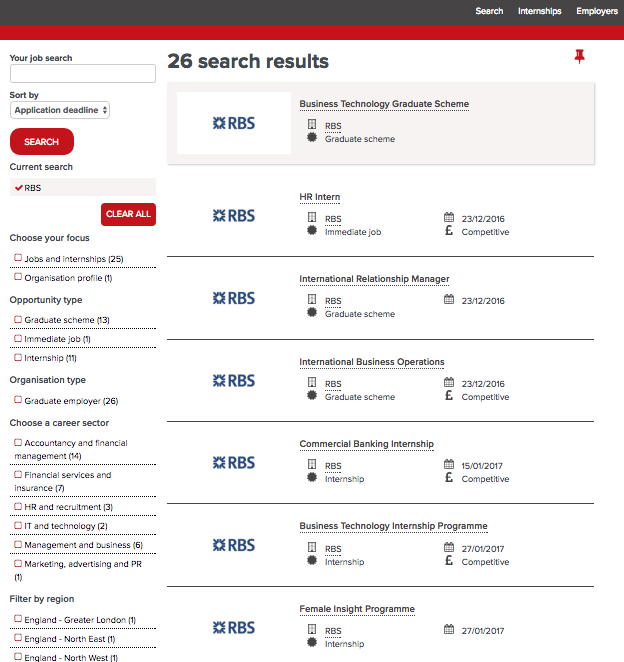“You can’t manage what you don’t measure.”
Deming and Drucker (2012, cited in McAfee & Brynjolfsson, 2012) explains why the recent explosion of digital data is so important. Simply put, because of big data, managers can measure, and hence know, radically more about their business, and directly translate that knowledge into improved decision making and performance. This forward thinking has caused business intelligence and big data analytics to become increasingly important in both the academic and the business communities over the past two decades (Chen at al, 2002). Industry studies have highlighted this significant development. For example, based on a survey of over 4,000 IT professionals from 93 countries and 25 industries, the IBM Tech Trends Report (2011) discovered business analytics was one of the four major technology trends this decade. Chief Economist at Google, Hal Varian (2012, cited in Chen et al, 2012) commented on the emergence of data analysis:
“So what’s getting ubiquitous and cheap? Data. And what is complementary to data? Analysis. So, my recommendation is to take lots of courses about how to manipulate and analyse data: databases, machine learning, econometrics, statistics, visualization, and so on.”
The previous research has largely focused on traffic driving activities and customer acquisition techniques such as online partnerships, social media influencers and email marketing. However, acquiring visitors is only the start of the process rather than, as many marketers believe, the end (Waisberg & Kaushik, 2009). Therefore, the attention now turns to data strategies, which closely supports content and engagement decisions and conversion strategies (Chaffey & Bosomworth, 2013).
The term ‘big data’ can take many forms such as messages, updates, images posted to social networks, GPS signals from mobiles, and many more. However, it is important for small businesses to narrow the scope and focus on an element of big data which is most important for their business. One important aspect and the focus of this research will include Web analytics. Web Analytics is the science and art of improving websites to increase their profitability by improving the customer’s website experience. It is a science because it uses statistics, data mining techniques, and a methodical process; it’s an art because the marketer must draw valuable and actionable insights to creatively improve the website (Waisberg & Kaushik, 2009). Asos are an excellent example of a retailer who have executed both the science and art of data analytics to top eConsultancy’s latest ‘Future of Retail’ benchmark report (Eccleston, 2016).
Asos topped the report for its impressive navigation performance on both desktop and mobile (Eccleston, 2016). Asos have not achieved this by chance, the navigation experience will be executed based on statistics and data mining techniques. Asos have a data driven culture and are known to test everything down to which models convert better in a specific item of clothing. While this may seem extremely confusing, difficult, time consuming and expensive for small businesses, it really isn’t!
The first important step is understanding web analytics is not a technology to produce reports; it is a process that proposes a virtuous cycle for website optimization (Waisberg & Kaushik, 2009). Within the process different methods and technology will be introduced to support each step of the process.
- Define Goals
Each website owner should have a clear idea of what they are trying to achieve and define success according to their own objectives (Waisberg & Kaushik, 2009).
- Build KPI’s
Key Performance Indicators (KPI’s) will show whether the objectives are being met. The Web Analytics Association (2007) agree of the three most important metrics – Unique Visitors, Visits/Sessions & Page Views. While these are the most common it is important to select the metrics which provide evidence your objectives are being achieved. Booth and Jansen (2009) identifies important KPI’s for each website type:
- Collect Data
Once the company decides what it wants out of the Web analysis, it is time to find the right tool (Booth & Jansen, 2009). For small businesses with smaller budgets than the likes of Asos, it is more appropriate and much simpler to use one of the most popular free analytics tools which is Google Analytics (https://analytics.google.com/) over paid tools which are analysed on the comparison site InfoWorld (http://www.infoworld.com/article/3128344/analytics/7-big-data-tools-to-ditch-in-2017.html). Google Analytics is a web based tool that generates detailed statistics and reports for the various KPI’s discussed above. Cordova-Ortiz & Jansen (2012) state Google Analytics is integrated into a site by a page tag; a snippet of JavaScript code, know as Google Analytics Tracking Code (GATC), which is embedded on every page of the website. Additionally, the analytics tool collects the referral information associated with the particular website this includes page visits directed from different websites such as online partnerships discussed in the last blog post. An example of the google analytics from this blog post can be seen below:
- Analysing Data
Most Web Analytics efforts fail to catch on. This is because of the large volume of the data which is available and can often side track analysts to review data which is not in the businesses interests. As mention in the KPI’s section, Web analysts should push themselves to find the “critical few” important metrics for the site (Waisberg & Kaushik, 2009). Waisberg and Kaushik (2009) give questions ecommerce should ask to focus on the correct metrics:
- Visitors are coming to the website, but it having any impact on the site?
- If there is an impact on the bottom line, is the website converting enough?
- What’s selling and what is not? Why is it selling? How much of it?
- Implement changes
As concluded by Phippen et al (2004) all the data gained is useless unless the data is understood and the findings are applied. The emphasis should be on Web intelligence – the information gleaned from a Website should be analysed and applied. A/B testing is a excellent method of implementing change derived from analysing data and comparing two versions of the implemented changes. This can include an update vs. the original page and then analysing the data again to see which page performed better. This video explains the A/B process:
https://www.youtube.com/watch?v=-Kh0xCKoNvU
The Benefits of analysing web analytics include:
One of the most important benefits includes learning information about the visitors to your website. This allows the business to make informed decisions and improvements based on their own consumers. In a survey of the state of business analytics by Bloomberg Businessweek (2011 cited in Chen et al, 2012), 97 % of companies with revenue exceeding $100 million were found to use some form of business analytics. Although this is focused on large businesses it shows the importance on understanding your data and the potential opportunities it provides.
However, there are some drawback:
Booth & Jansen (2009) advise allocating a full-time person in charge of the data once it is collected. This person should understand business needs, has knowledge of technology and marketing, has credibility and is already a company employee. Although it may be difficult and expensive to find for a small business, McFadden (2005) argues many experts agree that the return on revenue should be more than enough compensation.
Learning:
- “You can’t manage what you don’t measure.”
- Web analysis is not a technology it’s a ongoing strategic process.
- Although it seems like a complicated topic it can be simplified and specific to each individual business.
- Customer acquisition strategies is only the start of the process rather than, as many marketers believe, the end.
References
Booth, D. & Jansen, B. (2009) A Review of Methodologies for Analyzing Websites, IGI Global.
Chaffey, D. & Bosomworth, D. (2013) Digital marketing strategy: Planning Template. Smart Insights.
Chen, H., Chiang. R. & Storey, V. (2012) Business Intelligence and Analytics: From Big Data to Big Impact, MIS Quarterly. Vol 36, No. 4, pp. 1165-1188.
Cordova-Ortiz, A. & Jansen, B. (2012) Classifying Web Search Queries to Identify High Revenue Generating Customers, Journal of the American Society for Information Science and Technology. Vol 63, No. 7, pp. 1426-1441.
Eccleston, D. (2016) ‘What makes ASOS’s online customer experience so enjoyable? [Online] <https://econsultancy.com/blog/67823-what-makes-asos-s-online-customer-experience-so-enjoyable/> [Accessed 3rd May 2017]
Econsultancy, 20th May 2016 [Online] <https://econsultancy.com/blog/67823-what-makes-asos-s-online-customer-experience-so-enjoyable/> [Accessed 6th May 2017]
IBM. (2011) The 2011 IBM Tech Trends Report. London: IBM.
McAfee, A. & Brynjolfsson, E. (2012) ‘Big Data: The Management Revolution’ Harvard Business Review, October 2012 [Online] <https://hbr.org/2012/10/big-data-the-management-revolution> [Accessed 5th May 2017]
Phippen, A., Sheppard, L. & Furnell, S. (2004) A practical evaluation of web analytics, Internet Research, Vol. 14, No. 4, pp. 284-293.
Waisberg, D. & Kaushik, A. (2009) Web Analytics 2.0: Empowering Customer Centricity, The original Search Engine Marketing Journal. Vol. 2, No. 1, pp. 5-11.
Web Analytics Association (2007) Web Analytics Definitions. Washington: Web Analytics Association.











